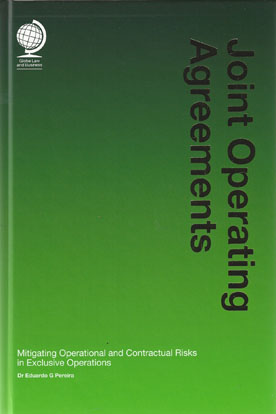
Joint operating agreements (JOA) are well-accepted standard agreements in the oil and gas industry. The basic aim of a JOA is to regulate the relationship between the parties to the joint venture: the operator and the non-operators.
The former is responsible for performing the operations on the behalf of the consortium, while the latter share in the costs of the joint venture. The main goal of the consortium is to provide joint operations to share the risks and costs of such an enterprise.
Exclusive operations, by contrast, provide for independent operations rather than joint operations. If these independent operations are successful, the ultimate consequence is the creation of a sub-consortium with different rules and parties; that is why this provision is so complex. There are no standard JOA models presenting clear and safe guidance on how to structure and implement independent operations.
For example, it is unclear how the parties decide whether and how these will affect the joint operations; what the consequences are if the operator for the joint operations refuses to be the operator for the exclusive operations; what happens should the government reject such a proposal (if the government is involved); what this provision should look like if a national oil company is a partner; and which provisions of the main JOA should apply to the exclusive operations.
This new title examines the most complex provision of the JOA, explaining everything that individuals working in the petroleum industry should know about exclusive operations and their consequences. It begins by explaining what exclusive operations are, the rationale (including pros and cons) behind them, and the parties to which they will be of interest.
It goes on to conduct the most extensive practical analysis available on the market, with over 10 JOAs analysed from all regions of the world, together with historical models that are no longer available for consultation. It then compares how joint development zones and unit operating agreements deal with exclusive operations, as they share the same concept as a JOA, but with parties from different blocs or jurisdictions. It finally provides clear guidance on international best practices and their main flaws, along with suggestions for existing and future JOAs.
In short, it offers a complete analysis of the most complex clause of the JOA, from its concept to its final implications. International oil companies, independents, national oil companies, consultants, legal advisers and consultants will be interested to learn how they could perfect their JOAs and understand the risks and issues that they might face in the future.